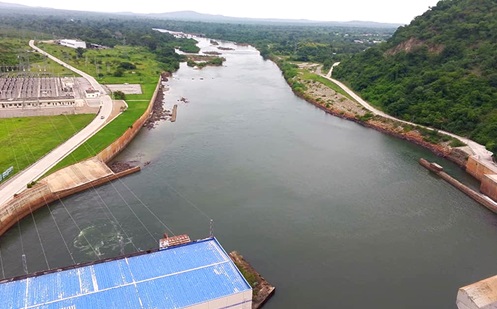Bui Dam shines as Ghana’s eco-tourism hotspot

The Bui Dam, Ghana’s second largest dam, after the Akosombo Dam, is a worthwhile destination for adventure, particularly for river landscape lovers.
Located on the Black Volta River, which forms the boundary between the Bono and Savannah regions, the dam offers a unique and enriching experience, creating a memorable experience after visiting the area.
The dam, which hosts the Bui Generating Station (BGS), is known for its natural beauty, which attracts nature lovers.
Scenic views
Viewing from the top of the powerhouse located at the foot of the dam, the area offers scenic views and a chance to experience the river and surrounding wilderness.
The lush landscapes, unique rock formations, mountain ranges, thick forests and clean water have contributed to its scenic views.
Commissioned in December 2013, it is one of the few places in the Bono Region where you can visit to feel nature’s ambience and appreciate the work of nature.
Ultimately, the dam has a serene, lush, unique and quiet environment worth visiting for pleasure.
BPA installations
Not only that, the Bui Power Authority’s (BPA) installations, particularly the West Africa’s pioneering five megawatts Peak (MWp) Floating Solar Farm, installed on the Bui reservoir at the Bui Dam, offer an interesting scene.
As the largest floating solar project in West Africa, it has become a site of attraction and centre of research for many African countries, where their energy-generating companies visit to research or learn to adopt similar insulations in their countries.
Early this month, the Uganda Electricity Generating Company Limited (UEGCL), led by its Board Chairperson, Margaret Njuki, visited the floating solar farm to solicit ideas for similar implementation in Uganda.
The visit was to offer delegates from the UEGCL first-hand experience of one of Africa’s pioneering clean energy installations.
It provided a platform for them to share insights into dam operation protocols, climate-smart environmental safeguards, hybrid energy optimisation, and regional energy policy frameworks.
During the visit, the Director of Engineering Services at BPA, Kwaku Sarpong Akosa, said the BPA had commenced installation of an additional 10MWp floating system to increase the existing capacity from 5MWp to 15MWp.
He explained that the expansion of the floating solar farm would help maximise utility without requiring new land resources.
For her part, the Chairperson, Mrs Njuki, said Ghana and Uganda had a lot in common in the energy sector, which necessitated their visit to BPA after the 2025 Hydropower Conference in Accra to learn how the Authority was utilising its resources.
She explained that UEGCL was in the process of establishing its floating solar system, “So being here gives us some hope that it can be done”.
“The visit had opened our eyes and minds to more opportunities. I’m impressed with the operations of the BPA,” Mrs Njuki stated.
Structural volume
The main dam’s structural volume is said to be 1,000,000 m3 (35,314,667 cu ft), while its full capacity is 12,570,000,000 m3 (10,190,665 acre•ft), with its active capacity being 7,720,000,000 m3 (6,258,706 acre•ft) and minimum level: 288 km2 (111 sq miles).
With a surface area of 444 km2 (171 sq miles) at maximum level and 167 m (548 ft) at minimum level, the Bui Dam has a normal elevation of 183 m (600 ft).
Its reservoir is also said to be 40 kilometres (25 miles) in average length and has a maximum water depth of 88 m (289 ft) with a 5-bay spillway and three penstocks.



